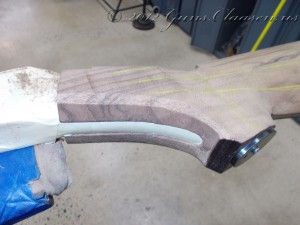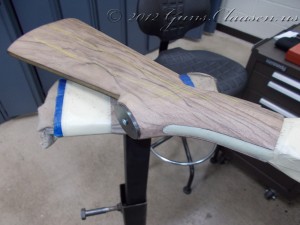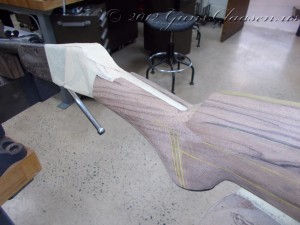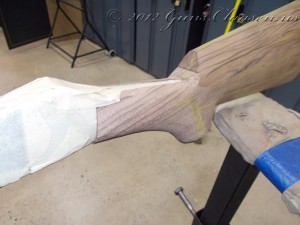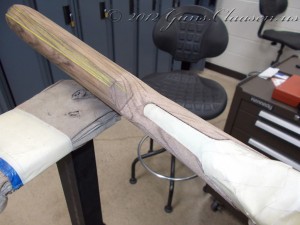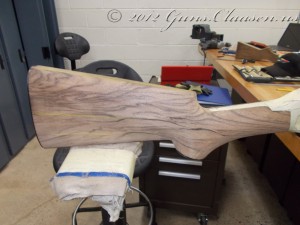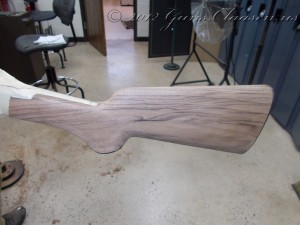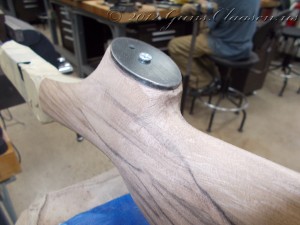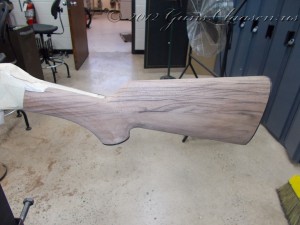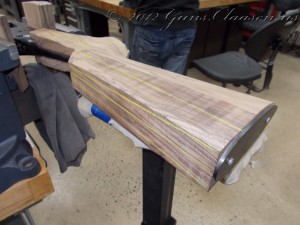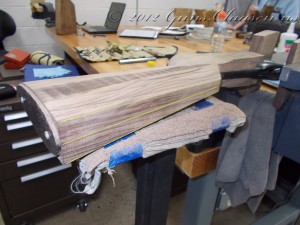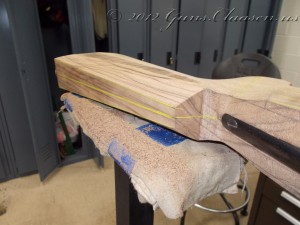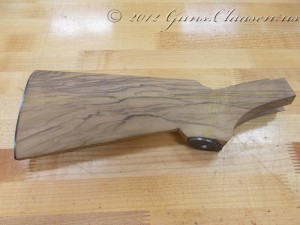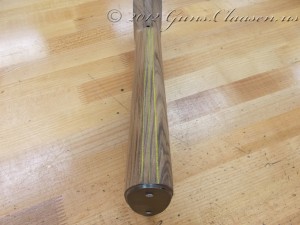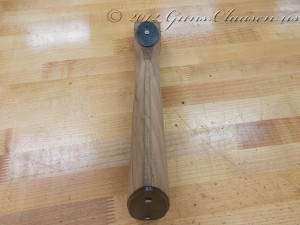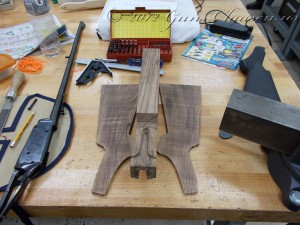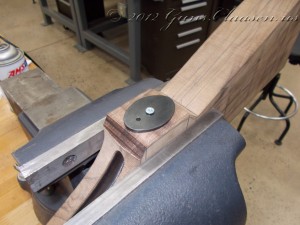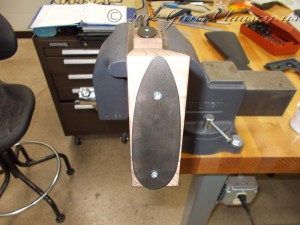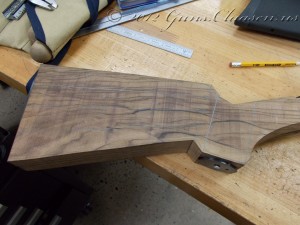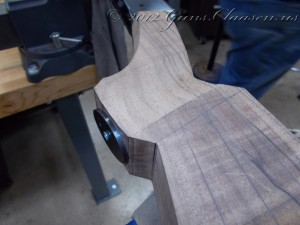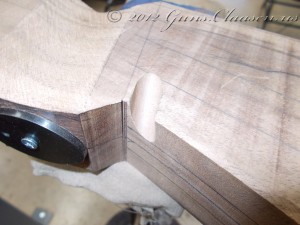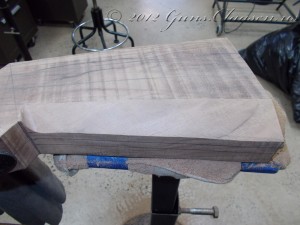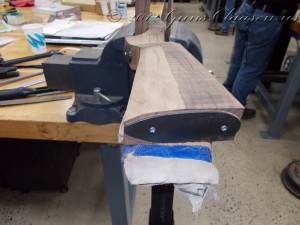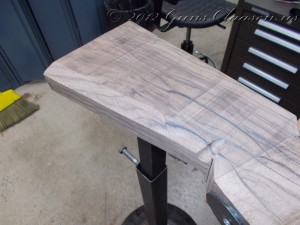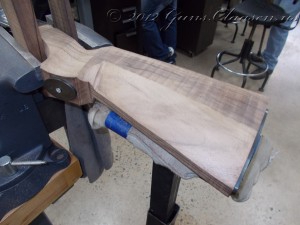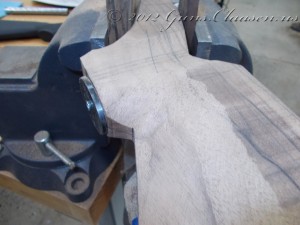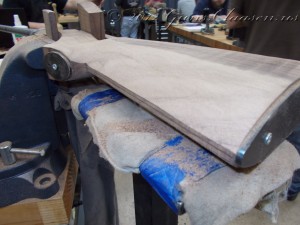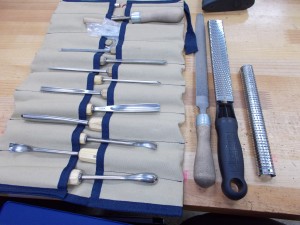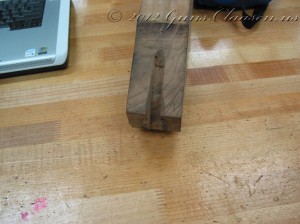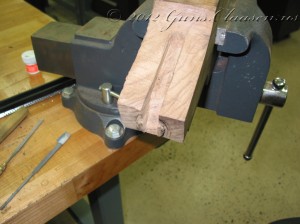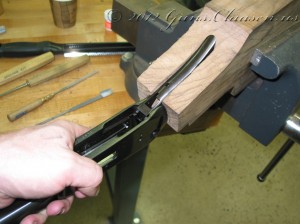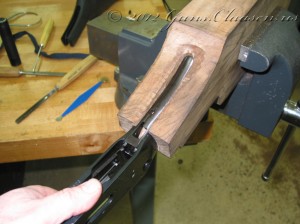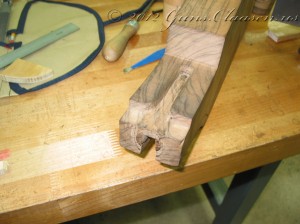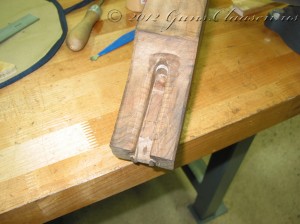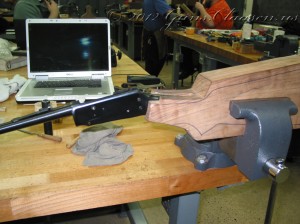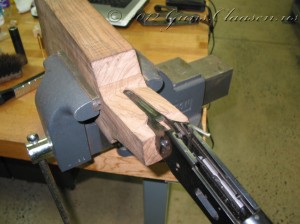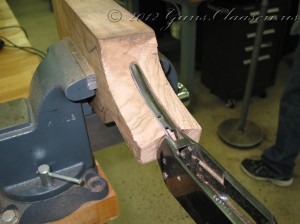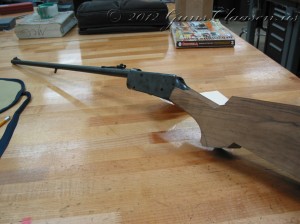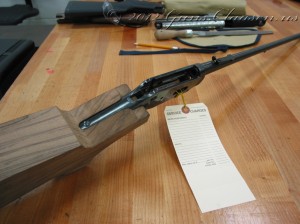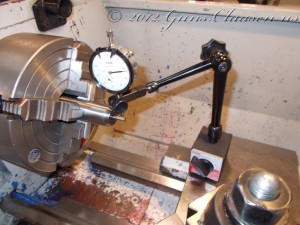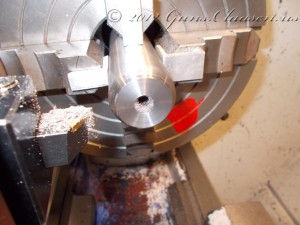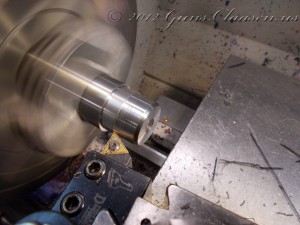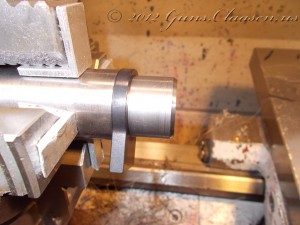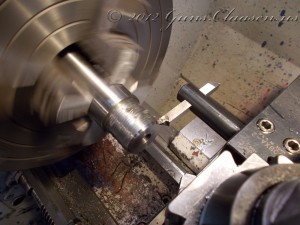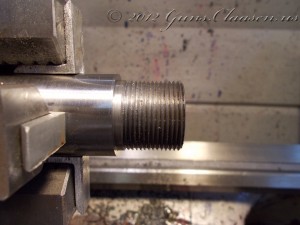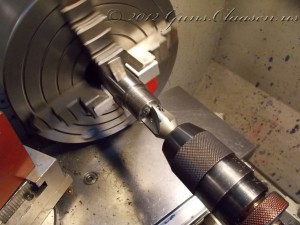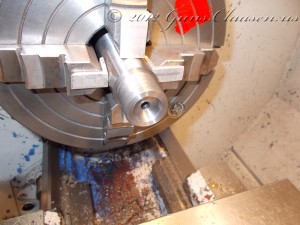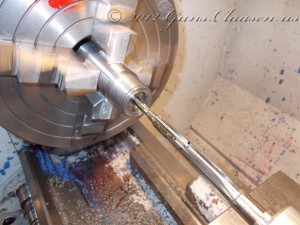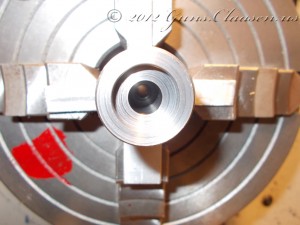Rifles
 Winchester 94: More stock work
Winchester 94: More stock work
Time to start working on the pistol grip area of the stock. The steps I took here are similar to shaping the rear of the stock. However, I did have to start looking at the shape of the metal on the receiver and start following that. Blending the transition areas of the pistol grip area is done mostly on looks. As with the butt-stock area, I worked sections at a time to make sure everything stayed even and in symmetry.
With the front area of the pistol grip done, I turned my attention to the top and bottom of the pistol grip itself. I rounded the bottom.
And then started working on the area at the top and the transition to the comb of the stock.
I reached this point at the end of a days work. After looking at the stock, I decided I did not like the sharp profile at the front of the comb and softened that up a little.
Normally the comb of a stock would be centered over the bottom of the pistol grip. It is not possible to do that on this rifle as the top tang of the receiver is in the way. It is now time to start working on the rear area of the pistol grip where it transitions into the butt-stock.
Now comes the time-consuming part. It is time to start the sanding. But that I will cover in my next post. As always, thank you for looking in and feel free to ask any questions!
 Winchester 94: Rough shaping the stock, continued..
Winchester 94: Rough shaping the stock, continued..
Time to make the top of the stock look less like a block. The process for the top mimics what I did on the bottom. I did use some yellow grease pencil to make the lay-out lines easier to see. Again, I worked on small sections making sure everything stays level and in symmetry.
In the next post, I will continue at the front end of the stock and work on the pistol grip.
 Winchester 94: Rough shaping the stock
Winchester 94: Rough shaping the stock
I am finally going to start changing this block of wood into something that somewhat resembles a stock. Since I started with a fairly thick wood blank, I decided to use the band saw to trim it down a little. After establishing a center-line for the blank in line with the rifle center-line, I marked out the width to which I wanted to cut the wood.
And we now have a thinner stock. I saved the cut-off wood for small future projects.
The next step is to mount two templates that I made in my first semester. First up is the grip cap.
And then the butt plate template.
These templates help me to shape the stock. Now it was time to do some layout work on the stock again. I divided the stock in four equal parts at the butt plate and just behind the pistol grip. I also added the following guidelines to the top and bottom of the stock: top, 0.625″ (1.58cm) just behind the pistol grip that expand to 1.25″ (3.175 cm) at the butt plate and bottom, 0.625 (1.58cm) for the length.
Now it is time for the shaping to start. The first step is to bring the pistol grip area down to roughly the thickness of the grip cap template on both sides.
Now it is time to start using the layout guide lines I grew earlier. Rough shaping the stock is done in a few steps and you work with only a small part of the stock. I started with the bottom left side of the stock. First, I filed a small guide groove behind the pistol grip.
I worked this quarter of the stock down to the first set of guide lines. I also had to make sure that the wood stays fairly flat. The tools I used to remove the wood was the flat micro plane and the #49 cabinet rasp. As both of these are fairly narrow, it is not easy to keep the wood flat. This of course applies to all the future work too and is even more crucial in the later stages of shaping the stock. A dip in the wrong place can spoil the looks of the product.
Next I worked up to the center-line of the stock.
The process then repeats on the other side. It is important also keep symmetry between the left and right side during this process. This photograph was taken during the process.
Now it is time to narrow the guide-lines at the bottom of the stock. The new guide-lines are 0.25″ (6.35cm) wide.
And the process repeats. I did make a mistake here. When you get to this point is not needed to do a front guide slot anymore. Lucky for me, it was not too deep! As the process is the same as before, I am only posting a few pictures to show the progression down to the point where the bottom part is rough shaped on both sides. You will also notice that I am slowly shaping the transition area to the pistol grip.
In the next post on this project I will show the rough shaping progress of the top part of the stock.
 Winchester 94: Inletting the bottom of the stock, starting to remove wood from the blank
Winchester 94: Inletting the bottom of the stock, starting to remove wood from the blank
After I completed the inletting on the top tang, I started with the lower tang. The lower tang is not fixed and that makes life a little more difficult. Furthermore, the screw that holds the receiver in the stock passes through the top tang and secures in the bottom tang in a blind hole on this model. So, not only did I have to work this down to the correct depth, I had to be really careful about how the hole will be drilled for the screw. I am showing a select few pictures of this process but it did take some time! First though, a picture of some of the tools I use. This shows the chisels, a #49 cabinet rasp and a micro plane. I some of the top bags of the tool roll is some scrapers and some needle file rasps.
On to the stock work:
And finally, after many hours of work I am done.
Next, I drilled the hole for the tang screw. No pictures of this, but I must admit that my first pilot hole was incorrect. Luckily, it was a minor mistake. Then the rifle is mounted back in the stock blank. This is the point where I start removing all the bits that do not look like a stock!
I started by removing material from the top of the tang area:
Then from the bottom tang area:
After I completed this, I removed the rifle from the stock blank again and used the original stock as a rough template. If you look carefully you can see that outline on the wood.
After I created the rough outline, I used an electric bandsaw to remove the excess wood and mounted the rifle back into the stock.
This is a good place to wrap up this post. In the next post of the series, I will do some layout work and start forming the stock.
